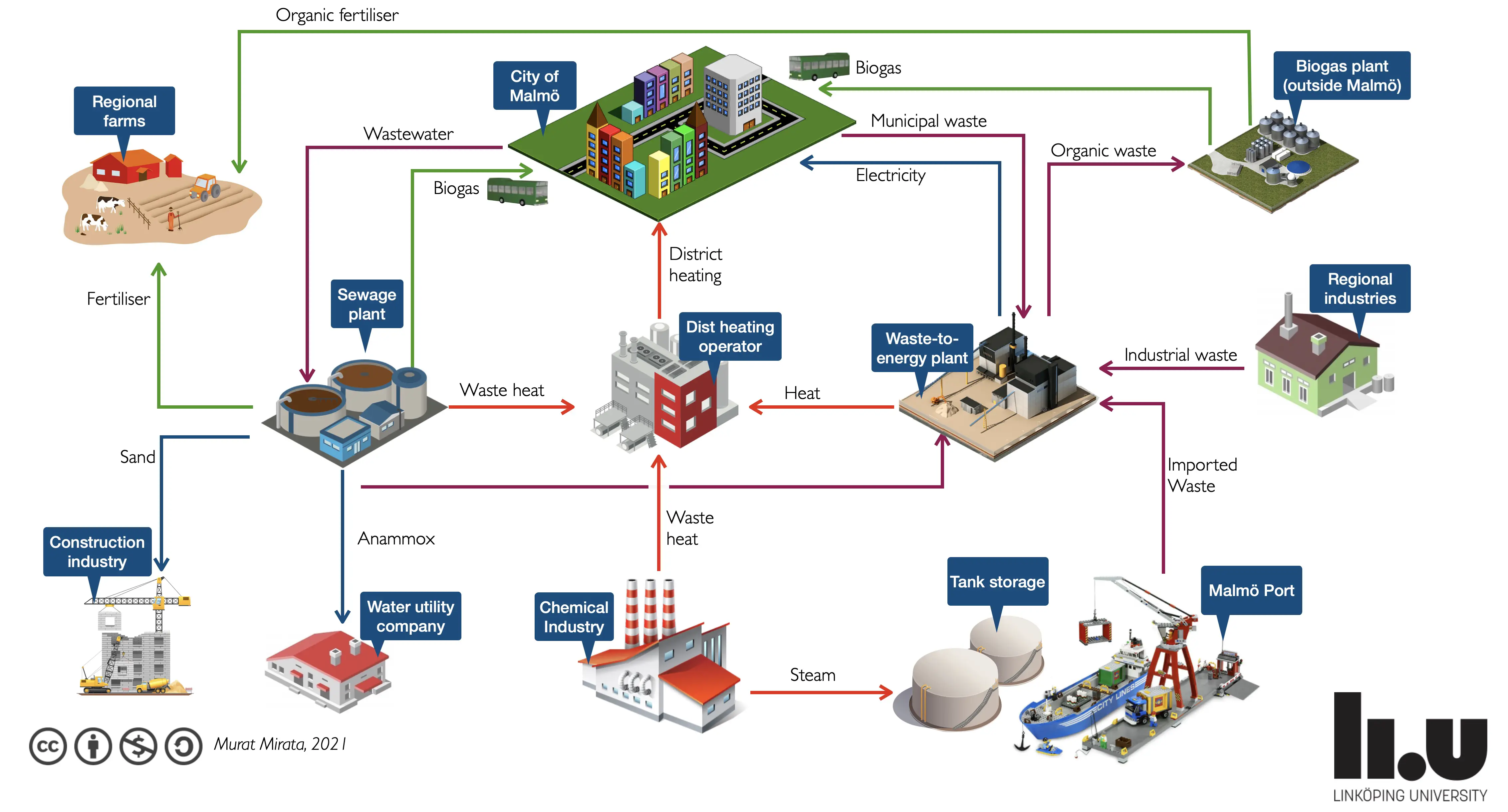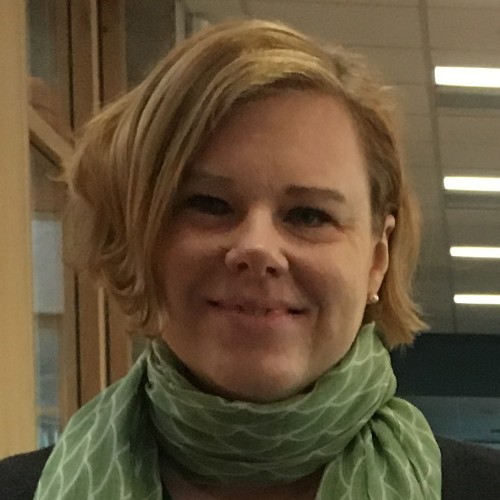Industrial and urban symbiosis in Malmö
A city with a dedicated symbiosis function to systematically promote IUS.
Advantages
- Energy and resource efficiency
- Municipal drive
- Innovation capacity & new products
- Fossil resources
- Primary resources
- CO2 emissions
- Waste generation
Overview
Since the 1990s, symbiotic collaborations between various industrial operations have taken place in the Malmö area. These began primarily between energy and waste management companies and a chemical industry that provided steam to nearby businesses and the city’s district heating network. Since 2012, a more focused effort has been made to facilitate and develop more symbiosis collaborations and networks in Malmö.
In the industrial area of Norra hamnen, new companies are offered opportunities to collaborate by creating conditions for shared solutions in transportation, security, energy supply, and waste management. By actively facilitating this shift toward expanded industrial and urban symbiosis, Malmö city seeks to identify companies that complement the existing material and energy flows in the area. This strategy aims to move toward more circular flows and better resource efficiency. Key players in Malmö, in addition to the city itself, include the municipal companies SYSAV and VA Syd, Copenhagen Malmö Port, E.ON, and Orion Engineered Carbons.
Highlights
Malmö city has established its own symbiosis function within the municipality, which steps in when inquiries are made about new establishments. They explore opportunities for synergies and collaborations with existing actors. Another hallmark of industrial and urban symbiosis in Malmö is the strong relationship between Malmö city and E.ON. The two regularly coordinate and share a vision of Malmö as a testbed for sustainable technical solutions in collaboration. One result of this partnership is the expanded heat cooperation focused on low-grade heat, Ectogrid, where the system’s function is to redistribute heat from properties with surplus to those with deficits.
In addition, Sysav is an important partner, handling both household and industrial waste and energy-recovering the materials that cannot be recycled to produce electricity and heat. Food waste from the municipality and VA Syd's sewage sludge is converted into biogas that powers the city’s buses, and the biogas production’s digestate is used as biofertilizer in agriculture. Orion Engineered Carbons supplies neighboring businesses with steam and sends surplus heat from their production to the district heating network run by E.ON.
Drivers and enablers
One of the enablers for the symbiosis network that exists today in Malmö largely stems from the long-term relationships that have been built over time. For several years, breakfast meetings and study visits between industrial and public actors in Malmö have been part of externally funded projects. Through these meetings, trust has been established.
The relationship between key players, such as E.ON, Sysav, VA Syd, and Malmö city, has been strengthened by a shared vision for the city’s development. Continuity has been important and has been reinforced by external funding, which has pressured the actors to continue meeting and deliver concrete action. The availability of a new industrial and logistics area in Norra hamnen, strategically positioned, along with the ambition to develop a resource-efficient industrial park, also serves as a driver and enabler for further development.


